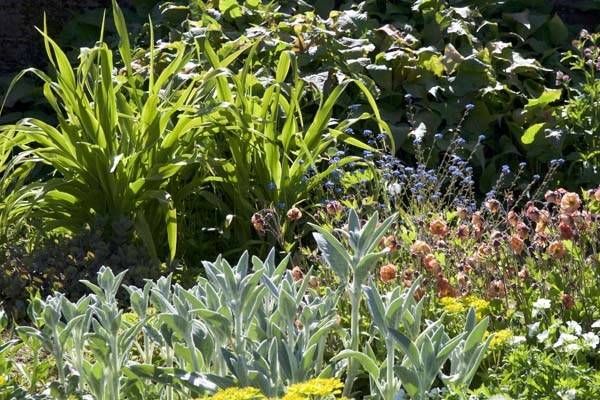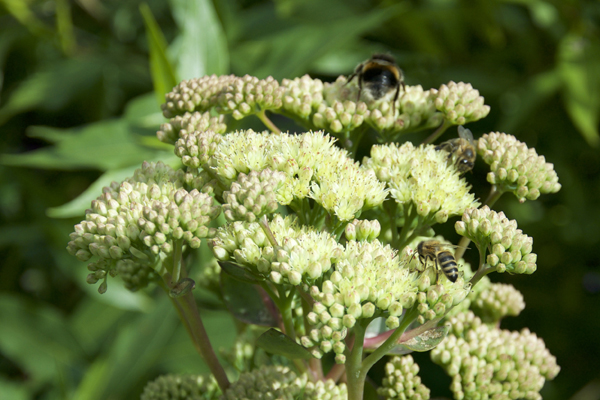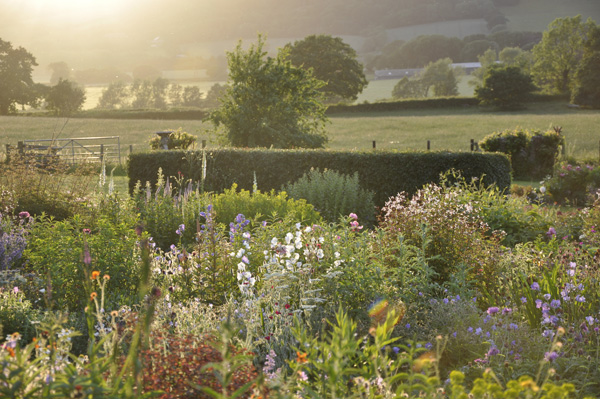Growing & Caring For Perennial Plants
No flower border is complete without at least a few herbaceous perennials. The top growth of these non-woody plants dies right back in autumn and emerge again in spring. Some herbaceous perennials are evergreen - but not many.

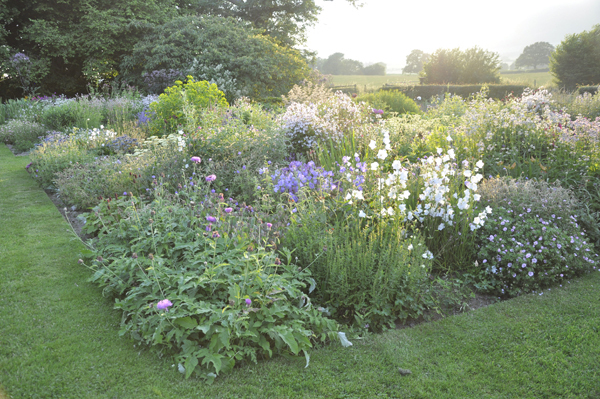
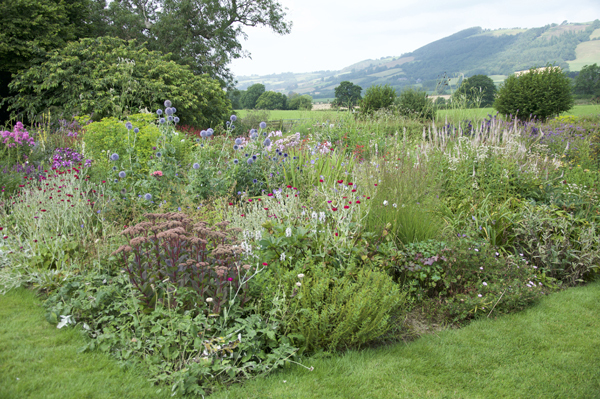
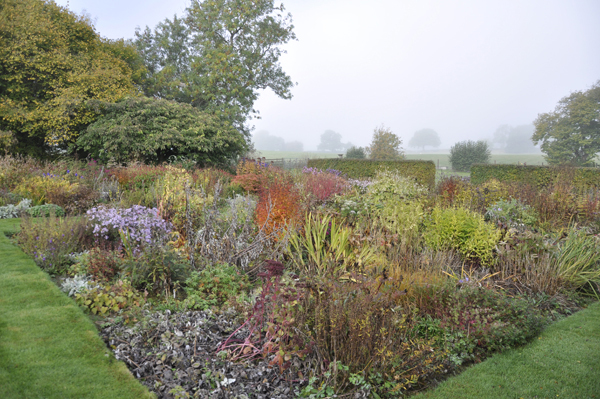
Back garden at White Hopton Farm in May, June, August and October
The Vast Range of Perennial Plants
In size they vary in height from 6in (15cm) right up to 5ft (150cm). Some perennials can be ground covering (prostrate in shape), bushy, mounding or very upright. Others are more flower based, some are best grown for their foliage. When choosing a perennial, look at the bit of the garden you want to plant them in the ask yourself questions - is the site sunny, shady, wet or dry. Decide which months you want flowers in (that’s if you want flowers) and for how long you want them to bloom. Those that bloom for a long time tend to be shorter lived (that's because they reproduce easily) while the more exotic plants such as peonies may take longer to establish but are trouble free and like being left alone.

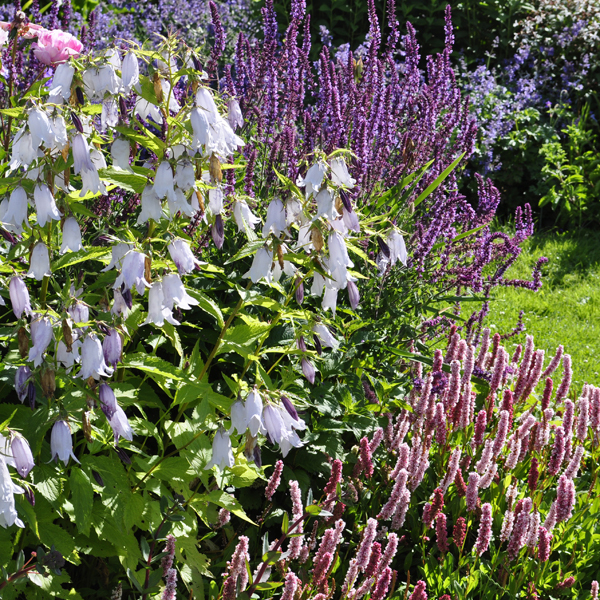
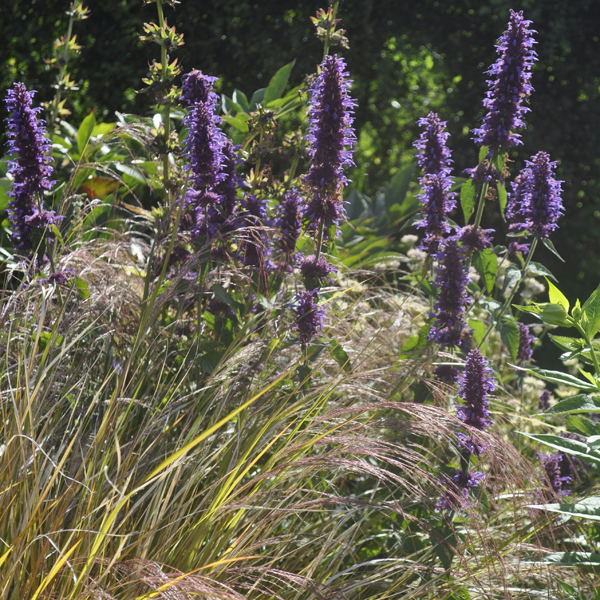

Evergreen, groundcover: Bergenia, Ajuga, Epimedium - Bushy: Campanula and Salvia - Soft: Agastache 'Blue Boa' and Anemanthele lessoniana - Upright: Persicaria and Crocosmia
In general most perennials are very easy to grow, requiring little in the way of attention especially during the growing season. Remember most of the wild forms of perennials are to be found in poor rough ground, such as along roadside verges, in poor, dry prairie, in poor, rocky land and crevices or near and beneath trees. Do not cosset them too much - they do not like it.
Planting Perennials
We sell our plants in two ways; in containers that can be planted throughout the year, and bare rooted plants which have to be lifted and planted when the plant is dormant, from autumn to spring. Whether planting a containerised or bare rooted variety, dig the hole deep enough to accommodate both the plant and its surrounding compost. Back fill with soil and water well. This is very important in spring and summer, and also if we get a dry autumn. Make sure the plant is kept moist for a least a week.

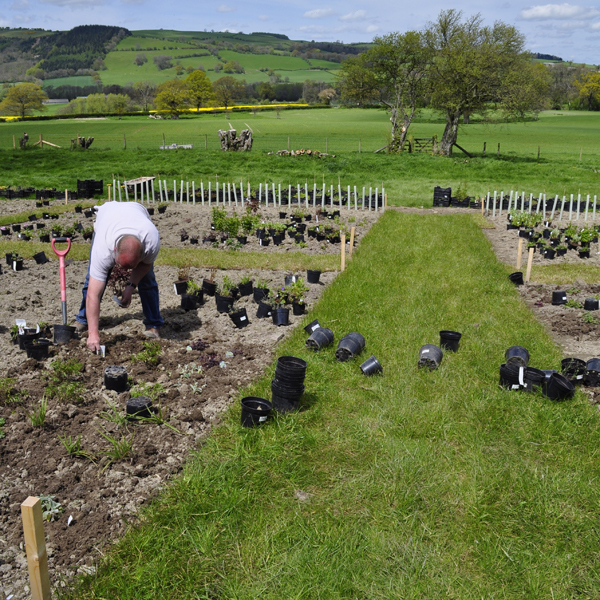
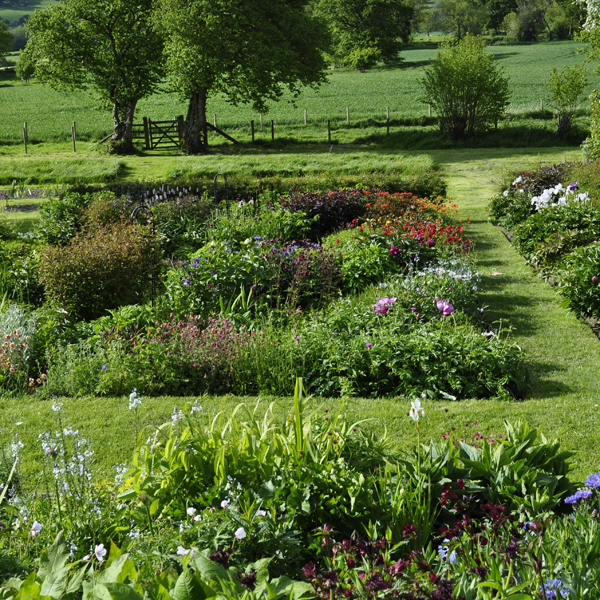
White Hopton Farm back garden May 2012 - the same area May 2015
Caring For Perennials
Most perennials do not like being fussed with. Generally they are plants that originate from deprived areas and their survival depended on their ability to be starved, eaten and trodden on. So any fertiliser you wish to add such be kept to a minimum.
Cutting Back Perennials
I cut back our perennials at different times. Some are cut just after they flower so that they produce flowers later in the season (hardy geraniums in particular); others are cut back to stop mildew (which can be bad in a warm, wet summer). In autumn I only cut those plants that look tatty and continue this process throughout the winter depending on the variety. Perennials are excellent for providing over wintering insects shelter; so try to keep some foliage until spring comes.
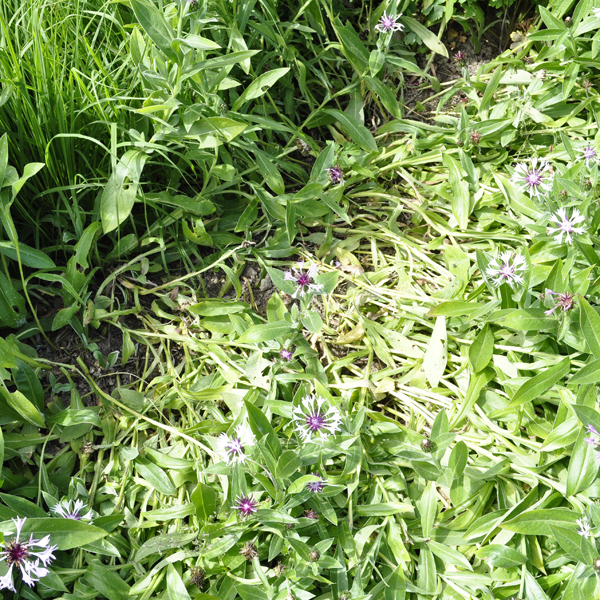
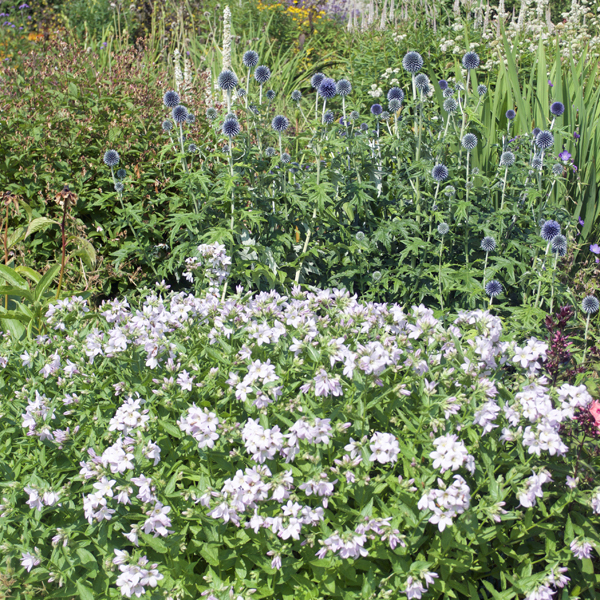

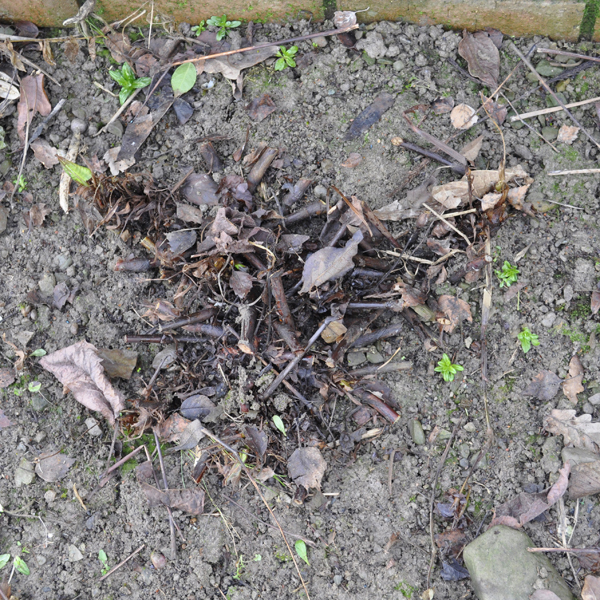
Cut back perennials if they flop over the neighbours by removing lax stems right back to the base, new ones will soon appear - If Campanula lactiflora are too big they may hide the plants behind, but cutting back to half the height in May they will stay short - Cut back perennials in late winter early spring - Persicaria amplexicaulis 'Firetail' after tidying up
Moving & Dividing Perennials
If, when the plant comes into flower, you find that its not in the right place, most perennials can be moved at any time of the year, provided you follow some rules. Water it before you dig it up. Then lift the plant with as much soil around it as possible. Replant it in its new location and water well. Keep it watered for at least a week. If it is in full growth and flower, it is best to cut the growth down to at least 6in (15cm) - this means it won't lose any more water through transpiration.
